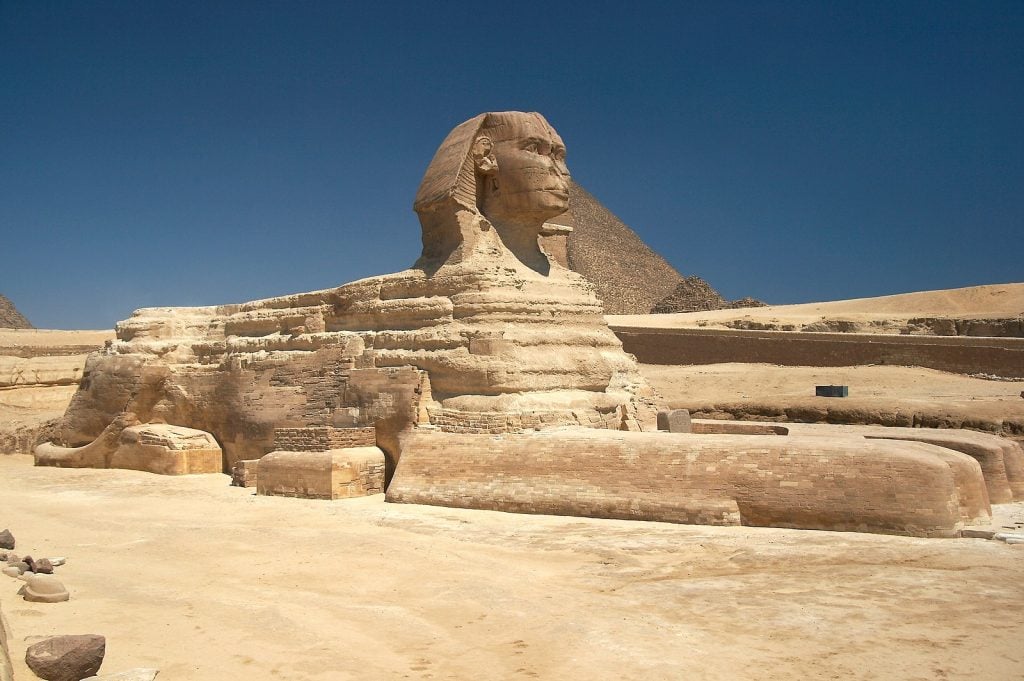Art & Exhibitions
Archaeologists Save the Sphinx from Damage


The Great Sphinx of Giza—which was closed in 2010 when cracks appeared on its northern side due to wind and moisture—will soon reopen again after nearly four years of thorough restoration, Art Daily reports.
“The Sphinx courtyard will be opened for the first time since the restoration of the monument,” Mohammed al-Damati, Egypt’s antiquities minister, told AFP. “Once the courtyard is opened, tourists can walk around the Sphinx.” However, a specific date for the opening has yet to be set.
The lengthy restoration involved replacing some slabs on the left side of the statue, where the cracks had appeared, and refurbishing the chest and neck of the monument with a new coating to prevent further erosion caused by rain, wind, and pollution.
The Sphinx was built around 4,500 years ago by the pharaoh Khafre in a quarry outside Cairo, near the area where the Pyramids of Giza stand. At 20 meters high, 57 meters long, and six meters wide, the limestone half-man, half-lion monolith is the largest single-stone statue in the world. Archaeologists are still unsure about the Sphinx’s original function, although most believe it was constructed for religious and astronomical reasons.
The Egyptian antiquities minister told AFP that a small temple next to the Sphinx, built by pharaoh Amenhotep II, will also be opened to the public for the first time and that the Menkaure pyramid, the smallest of the three Pyramids of Giza, is also slated to reopen after a three-year restoration.